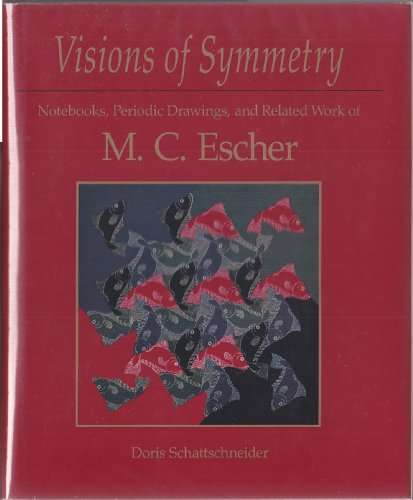
Visions of Symmetry: Notebooks, Periodic Drawings, and Related Work of M. C. Escher
Check my rate
| Main centres: | 1-3 business days |
| Regional areas: | 3-4 business days |
| Remote areas: | 3-5 business days |

| Main centres: | 1-3 business days |
| Regional areas: | 3-4 business days |
| Remote areas: | 3-5 business days |
Published by W.H.Freeman, 1990, hardcover, large format, illustrated, index, 354 pages, condition: as new.
The only book to combine illustrations of M.C. Escher's notebooks with the complete body of his symmetry drawings (180 of which were unpublished before this book). It offers a fascinating journey of discovery for Escher afficionados of all kinds, including artists, designers, historians, mathematicians, and scientists. "A study of Escher's art and thoughts and an intellectual biography of the artist."--Choice. 430 illustrations.
This wonderful book strikes the exact proper balance of biographic detail and expository analysis on the one hand, and beautiful reproductions of the artist's artwork from prints, installations, and above all personal sketchbooks on the other hand. It's essentially a narrowly specialist biography: its focus is Escher's artistic and intellectual oeuvre on regular tessellations of the plane, and how his understanding and output in this field evolved over his lifetime. That said, the book is full of human detail; this fact is rapidly explainable by the enormous space that regular tesselations occupied in the mind and life of this artist.
My favorite piece of all (I hope that a quotation here in a review constitutes fair use) is a recollection from Escher's son:
"Father had an unusual inclination to recognize animal shapes in seemingly random patterns like clouds or wood grain, which served him well when developing his regular patterns of interlocking animals. . . . The wall in the small downstairs washroom was decorated with irregular swirls of green, yellow, red and brown, created by splashing movements of a brush. Father . . . would take a pencil and emphasize with a line here, a shade there, some portion of the wall pattern. . . . For us children that washroom became a special attraction because, as the months went by, the originally drab, uninteresting wall came alive with faces. Every few days a new one would appear, laughing, sad, grotesque or solemn and I remember how I would scan that wall on my visits to the toilet, hoping to discover some new personality."
The thought of Maurits Cornelis on the pot, preoccupied with identifying and delineating bizarre figures in the chaos of the wall paint next to the toilet while performing his ablutions (not to mention the thought of a houseful of children growing up scanning said wall for said figures while performing theirs) completely delights me.
A LARGE COFFEE TABLE BOOK.